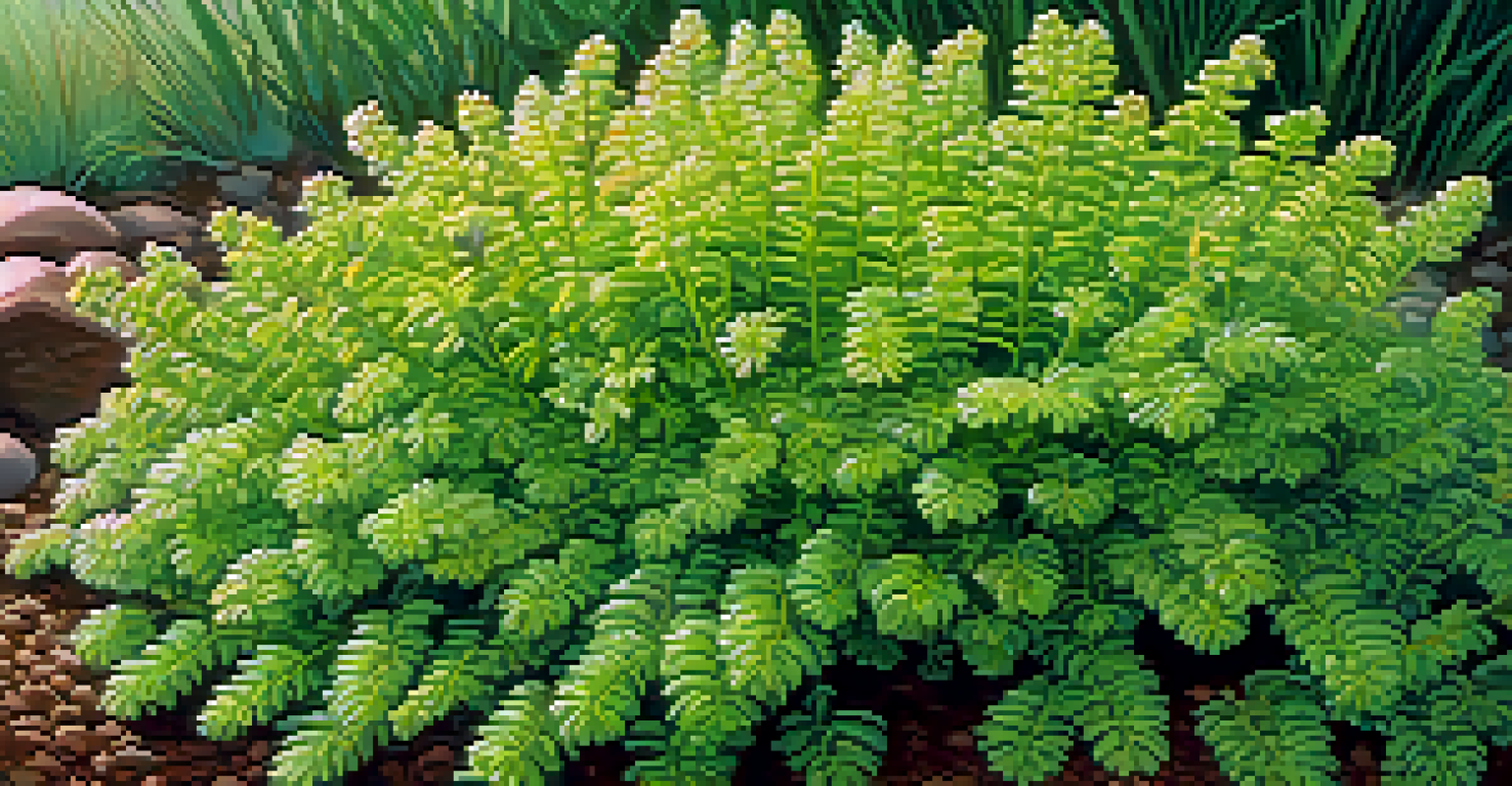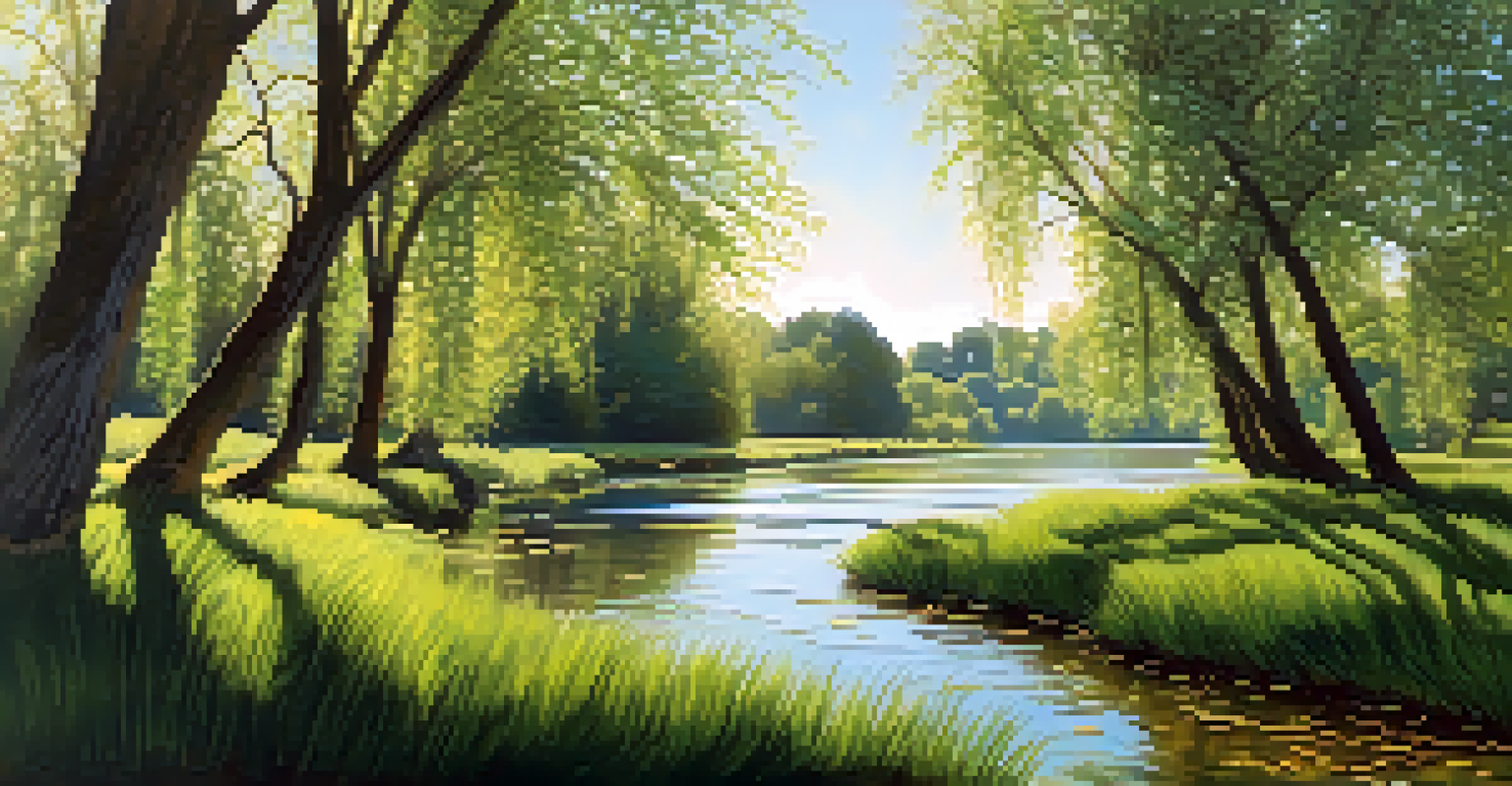Erosion Control: Choosing the Right Plants for Your Area

Understanding Erosion and Its Impact on Your Landscape
Erosion is a natural process that can lead to the loss of soil and degradation of land. It occurs when wind or water removes topsoil, which is crucial for plant growth. Understanding how erosion affects your area is the first step in developing an effective control strategy.
The soil is the great connector of our lives, the source and destination of all.
In many regions, erosion can cause significant damage to waterways and habitats, impacting both wildlife and human communities. For example, areas near rivers may experience increased sedimentation, leading to poorer water quality. Recognizing these impacts can motivate you to take action.
By choosing the right plants, you can help stabilize the soil and reduce erosion. This not only benefits your immediate landscape but also contributes positively to the surrounding ecosystem.
Identifying Your Local Climate and Soil Conditions
Before selecting plants, it's essential to understand your local climate and soil type. Different regions have unique weather patterns, moisture levels, and soil textures that affect plant growth. For instance, a dry desert area will require different plants than a humid coastal region.

Conducting a simple soil test can reveal pH levels and nutrient content, helping you choose plants that thrive in those conditions. Additionally, observing your area's native plants can give clues about what species naturally adapt well to your environment.
Erosion's Impact on Landscapes
Erosion can lead to soil loss and degrade land, affecting both ecosystems and human communities.
By aligning your plant choices with local climate and soil conditions, you create a more sustainable solution for erosion control that requires less maintenance and water.
Choosing Native Plants for Erosion Control
Native plants are often the best choice for erosion control because they're adapted to local conditions and require less maintenance. They also provide habitat for local wildlife, which can further enhance your landscape's resilience. For example, a native grassland plant can help hold soil in place with its deep root system.
We do not inherit the earth from our ancestors; we borrow it from our children.
When selecting native plants, consider varieties that have extensive root systems and can tolerate varying moisture levels. These plants not only stabilize the soil but also improve soil health over time through natural processes.
Incorporating native plants into your erosion control plan creates a harmonious ecosystem that supports biodiversity while effectively combating erosion.
Incorporating Ground Covers for Added Protection
Ground covers are low-growing plants that spread quickly, covering the soil and providing an additional layer of protection against erosion. They help retain moisture, suppress weeds, and reduce the impact of rainfall on bare soil. Think of them as Mother Nature's blanket, wrapping the soil snugly.
Choosing ground covers that are drought-resistant or suited to your local climate can enhance their effectiveness. For example, creeping thyme or sedum are excellent choices in dry areas, while ferns might thrive in shadier, more humid spots.
Benefits of Native Plants
Using native plants for erosion control enhances soil stability and supports local wildlife.
By layering ground covers alongside other plants, you create a multi-dimensional approach to erosion control that maximizes soil protection and encourages a vibrant ecosystem.
Using Shrubs and Trees for Stronger Soil Stability
Shrubs and trees play a vital role in preventing erosion, particularly on slopes. Their deep-root systems anchor the soil, making them excellent choices for areas prone to landslides or heavy rainfall. For instance, willows are known for their ability to stabilize riverbanks effectively.
In addition to their erosion control benefits, shrubs and trees provide shade, improve air quality, and enhance the aesthetic appeal of your landscape. When selecting these larger plants, consider species that thrive in your local environment and have a reputation for stability.
By incorporating shrubs and trees into your erosion control strategy, you not only combat soil loss but also create a richer habitat for local wildlife.
Creating a Diverse Planting Strategy for Success
A diverse planting strategy involves mixing various types of plants, including grasses, ground covers, shrubs, and trees. This diversity mimics natural ecosystems, which are generally more resilient to erosion. By combining different plants, you can protect your soil from multiple angles.
For instance, while grasses may provide quick coverage, shrubs can add depth and stability. This layered approach ensures that even if one type of plant struggles, others can fill in the gaps and continue to protect the soil.
Diverse Planting for Resilience
A varied planting strategy, combining grasses, shrubs, and trees, strengthens erosion resistance and promotes ecosystem health.
By embracing diversity in your planting strategy, you enhance the effectiveness of erosion control while fostering a thriving environment.
Maintenance Tips for Your Erosion Control Plants
Once you've selected your plants, proper maintenance is key to ensure their effectiveness in controlling erosion. Regular watering, especially during dry spells, and monitoring for pests can help keep your plants healthy. Think of it as nurturing a friend – they need your attention to thrive.
Mulching around your plants can also help retain moisture and suppress weeds, further supporting their growth. Additionally, periodic pruning may be necessary to encourage healthy growth and prevent overcrowding.

By maintaining your erosion control plants, you contribute to a sustainable landscape that not only protects your soil but also enhances the beauty of your environment.